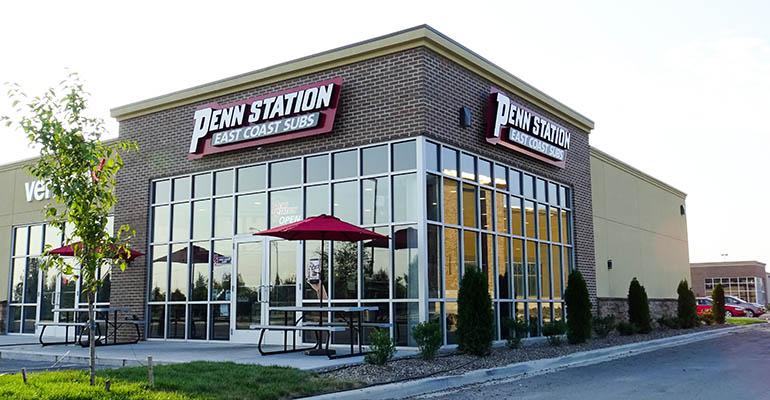Within the last five years, mobile apps have become more ubiquitous for restaurant brands, and many have touted the need for an even more robust app after COVID-19 hit: Dine-in orders decreased significantly, online and phone orders increased substantially, and we were all told customers needed as many virtual, non-contact ways to communicate with brands as possible.
However, while many brands scrambled to add a mobile app in 2020, Penn Station East Coast Subs concluded — after analysis and internal discussions with the corporate team, numerous franchisees and, as importantly, frontline employees — to phase out our app and points-based loyalty program.
Here are six reasons why your brand might not need an app:
They are expensive.
Not only do apps require a large initial investment, the monthly and ongoing maintenance fees are expensive. There are ongoing costs that you cannot get around, and we found that the return on investment we were receiving was not great.
 Photo: Craig Dunaway
Photo: Craig Dunaway
Even though we had over 1.2 million people download the app initially for the free sub we were offering to join our loyalty program, less than half of those ever used the app once after the free sub was given. Today, less than 36 months later, less than 15% of those same customers use the app at all, and to make it even worse, more than 50% of those same customers have used it only one time in the last three months. This is not necessarily a stellar statistic when arguing to keep the app, and it was not worth the cost of maintaining the app for a small amount of active users.
Email loyalty programs are as effective.
Strategic email messaging has proven to be the best and most cost-effective way to communicate with customers, and the importance of a robust email club was magnified in 2020.
Penn Station has an email database with almost 1 million loyal patrons who have used the email program for up to 20 years. At its purest form, we communicate offers and other pertinent information about the brand to our guests about twice a month via our email program. However, it’s also essentially a loyalty program without the complication of tracking points.
We offer email subscribers periodic promotions, discounts and non-promoted offers, and at the same time, keep them apprised of any upcoming offers or specials we may do. This is easier and simpler for customers to use than even the most user-friendly app. More importantly for our brand and the franchisees, it is much less expensive to maintain.
We don’t want to mine data.
There are a few restaurant brands that have very popular loyalty programs and apps. In fact, as a company, we are impressed with the programs offered by these major brands. However, many of these larger brands have teams of analysts dedicated full-time to mining data from their app and loyalty program daily. The amount of data they acquire on guests is voluminous. Countless laws have been enacted to ensure this data isn’t intrusive and meets the plethora of consumer privacy laws the country has.
For Penn Station, as a medium-sized regional brand, we did not have the infrastructure to do that, nor did we want to create it. We felt it would be intrusive to our customers. Since we have not used the customer data, our app did not provide that additional value to the brand or our franchisees that some brands might appreciate.
You don’t need an app for online ordering.
We were told the most popular and useful feature for any app, especially during the COVID-19 pandemic, was mobile ordering. However, online and mobile ordering are easy to offer without an app. Because of the number of data breaches the past five years, customers have proven to be reticent to provide their credit card data and have it stored permanently with a third-party brand.
During the height of COVID, almost one-third of our orders were placed digitally (mobile or online). Ironically, however, only 3% of the online orders were placed through the app; most were via a computer browser or mobile website.
Without the app, we simply offer online ordering the way the majority of our customers desire, allowing them to take advantage of the technology to order via our website on their computer or smart phone.
The extra features were not being used.
When we first created our app three years ago, we thought people would share it with their friends to earn more loyalty points, which would bring us new customers. That did not end up being a popular feature, and in short order, we eliminated the function.
We were also told gift cards would be almost fully digital in the next five years, and we designed the app to allow for customers to give digital gift cards to others. We erroneously thought sending gift cards through the app would be helpful.
In the last couple of years, we have seen a shift in consumer preferences for gift card purchases. Instead of buying brand gift cards, more consumers are buying generic, cash-type cards.
Consumer behavior gives preference to third-party deliver apps.
A recent study showed that, of the top 10 food apps in the world, four were third-party delivery company apps, while the balance were high-frequency global brands with ubiquitous awareness.
It seems obvious that most brands cannot compete against the behemoths that spend millions in developing and maintaining apps, and a customer isn’t going to download every restaurant app, rather only the brands they use several times per week.
In the real world, customers have become more selective about which brands they keep on their phone. It’s less about their affinity for the brand or preference of your food, rather if you don’t fit into their daily life (e.g., coffee, health food, etc.), they may forgo the app, but still know how to find you.
Additionally, with constant advertising and brand messaging filling their lives, customers often exercise their ability to turn off push notifications. Net, without the line of communication, your app has effectively become an online ordering platform.
Like it or not, third-party delivery apps have effectively become restaurant search engines. If a customer can download one app and have access to essentially every brand’s menu, it becomes less likely that they’ll download additional restaurant apps simply because they like the food.
An app may seem like a must have for restaurants in 2021, but if you do a thorough cost-benefit analysis, you may find it isn’t worth the investment if you are able to offer the key features like online ordering and rewarding customers another way.
CORRECTION: This article has been updated to correct Craig Dunaway's title.
Craig Dunaway is president of the grilled, made-to-order sandwich concept Penn Station East Coast Subs, which has more than 300 locations in 15 states.
This article does not necessarily reflect the opinions of the editors or management of Nation's Restaurant News and Restaurant Hospitality.

